ISIS will soon be driven out of Iraq. What comes next?
Iraq may be in trouble again once the common enemy is gone
31/08/2016 — Qayarah, Iraq —
Men inspect burning oil wells on the outskirts of Qayyarah.
Share
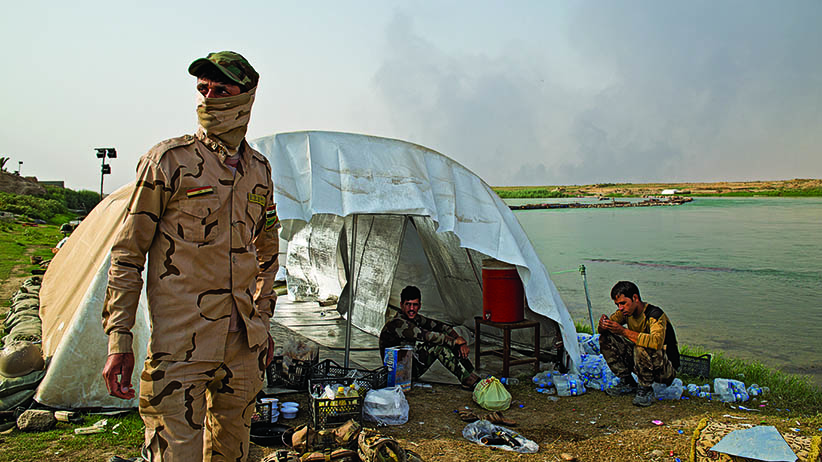
Greasy smoke billowing from oil fires blots out the late August sun above Qayyarah. The smell of rotting bodies oozes from the rubble of destroyed buildings. The fires were lit weeks earlier when Islamic State fighters still occupied the town, in an attempt to obscure their positions from coalition air strikes. The only Islamic State fighters left are now dead, but the fires still burn and tar-like crude oil floods entire neighbourhoods.
Despite the apocalyptic scene, the residents of this northern Iraqi town are outside celebrating. Mahmoud Diab, a 48-year-old labourer with a permanently furrowed brow, sits in the market street with relatives, smoking cigarettes with gusto. “It’s like eid for us,” a holiday, he says.
The Iraqi army drove ISIS out of Qayyarah on Aug. 25, ending a fanatical and increasingly paranoid rule. For the past 2½ years, Qayyarah’s 40,000 odd residents stayed inside for all but essential business, Diab says. He recounts food shortages, gruelling taxation and brutal punishments for minor infractions. Whippings for those caught smoking, executions for those found with a SIM card, which might be used to inform against Islamic State fighters. “Being liberated, it’s like being resurrected from the dead,” he says.
Qayyarah is the largest and most recent town to be retaken in the Iraqi army’s campaign toward Mosul: the capital of ISIS in Iraq. Iraq’s second largest city and Nineveh’s provincial capital, Mosul lies 80 km north of Qayyarah. If the city is retaken, ISIS will be all but defeated militarily in Iraq. Already ISIS has lost most of the territory it once controlled in Anbar and Saladin provinces.
Iraqi Prime Minister Haider Al-Abadi has pledged to recapture Mosul this year, something that Iraqi army officers, Kurdish peshmerga and Sunni tribal fighters tell Maclean’s they are on track to achieve. But tough fighting lies ahead, likely to displace hundreds of thousands of Iraqis, producing a humanitarian catastrophe the UN warns it is ill-equipped to handle. These factions fighting ISIS also have competing agendas for the future governance of Nineveh. A post ISIS-Iraq may finally be in sight, but the future is not necessarily bright.
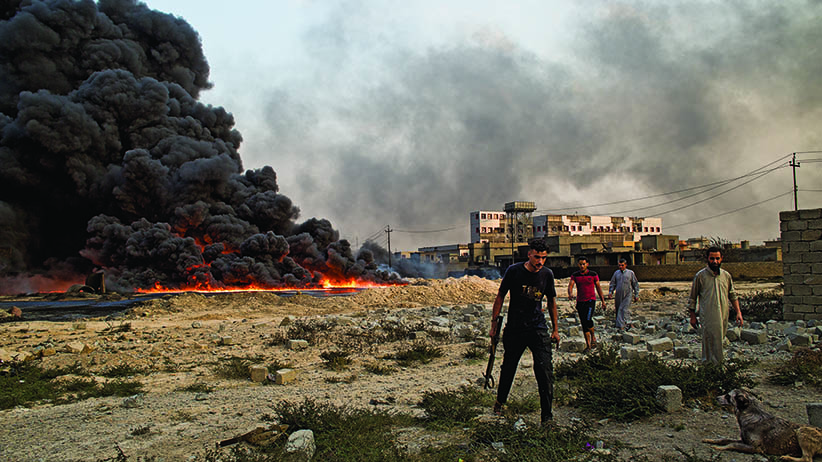
On the outskirts of Qayyarah, soldiers from the Iraqi army’s 15th division relax on the banks of the Tigris in an interlude between fighting. Hamad Abdul Rahim, a 22-year-old soldier, says they can smell victory, as distinctly as the algal odour of the water sliding placidly under the pontoon bridge they are guarding. It’s been a long road, he says, smiling grimly under the brim of his boonie hat.
In the summer of 2014, when the Sunni extremists took Mosul without a fight, Abdul Rahim was working in a restaurant in Rashidiya, a Shia neighbourhood of Baghdad. As much of the Iraqi army collapsed in the face of the ISIS advance, Abdul Rahim decided to join up. “I joined to protect our land and clean this country from the scourge of ISIS,” he says. “I heeded Sistani’s call to fight.”
The spiritual leader of Iraq’s Shia Muslims, Ayatollah Sistani had on June 13 issued a call to arms to confront ISIS. Shortly after, the government formed the Popular Mobilization Forces, uniting existing (mostly Shia) militias under a government umbrella. But Abdul Rahim, himself a Shia, faced threats from these militia (many of which had earlier opposed the American invasion) because he had previously worked as a contractor on U.S. military bases. “That’s also why I joined the army,” he says, “I needed protection.”
His unit received training from international coalition advisers and fought ISIS in slow and bloody engagements in Anbar province. Since the Nineveh operation began, his unit has fought a dozen separate battles with ISIS, he says. One of Abdul Rahim’s comrades holds up his smartphone to show a photo of a body, charred beyond recognition and stuffed in a plastic bag. “That’s Fuad Basel,” says Ahmed Shash Qassem, a 25-year-old from a town called Al-Hillah in Babel province. “He burned to death when they hit his armoured vehicle.” The next photo on his phone shows a 23-year-old Basel alive and smiling, his arm around Qassem. “He was my best friend.”
Abdul Rahim interjects: “We’re beating them now though, ISIS is not strong like before.”
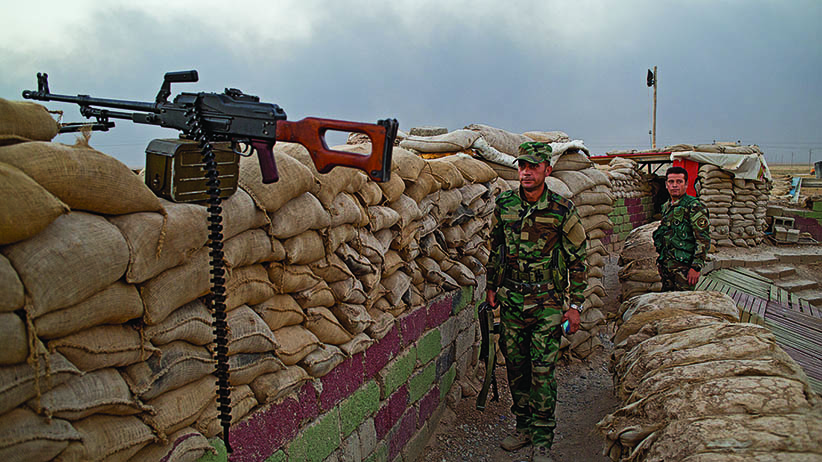
That sentiment is seconded 30 km to the east, at the Makhmour Iraqi army base, where Maj.-Gen. Najim al-Jabouri is in charge of the Nineveh operation. He’s consulting with his top brass to replace the pontoon bridge that Abdul Rahim and his comrades are guarding with one that can support the transit of heavy tanks. “It can be done in 15 days,” says one of Jabouri’s officers. “Excellent, but I need everything to be perfect,” he replies, dismissing the meeting.
Related: The ISIS leader who once received Canadian military training
Jabouri was a career army officer under former president Saddam Hussein, and after the 2003 U.S. invasion served as mayor of Tal Afar, 70 km west of Mosul. He worked closely with the Americans to cleanse the town of al-Qaeda. Later, Jabouri moved his family to the U.S., where they lived in Woodbridge, Va., in a house with an American flag fluttering from the porch. A member of the influential Jabouri tribe, he maintained connections in Nineveh, however, and last year returned to take command of the operation against ISIS.
Speaking in English, Jabouri explains how the ongoing offensive, combined with coalition air strikes, has greatly weakened ISIS. “Even a few months ago they were much stronger than now.”
Dozens of villages still need to be cleared before the assault on Mosul, but he’s already focused on the final battle. “Today there are not more than 3,000 hardcore ISIS fighters left in Mosul,” he estimates. The main difficulty, he anticipates, is if ISIS uses civilians in the city as human shields. “We need to do like surgery and be very careful not to hurt these people,” he says.
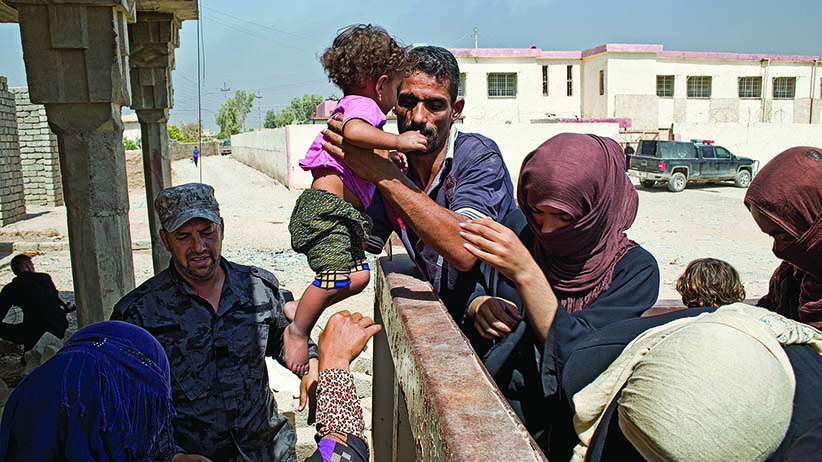
Jabouri’s plan for reasserting control over Mosul has three stages. “First we clear, then we hold, and after that we rebuild.” It’s cribbed straight from the U.S. military’s counterinsurgency manual, which he applied in 2005 in Tal Afar. The strategy succeeded there, and the city remained relatively quiet for nearly a decade (today the town is a renowned ISIS stronghold famous for producing jihadi leaders).
Holding Mosul—and preventing an insurgency against the authorities—will be the real challenge. While his men were welcomed as liberators in Qayyarah, Jabouri doesn’t expect that good will to last. Many Sunni in Nineveh see the army as a sectarian force, an impression that will be reinforced by Shia flags flying from some army positions in Qayyarah. Even less likely to be welcomed into Mosul are the Shia militias, which operate more independently than army units.
Jabouri realizes this and says a holding force in Mosul will need to be accepted by the population. “The reason Mosul fell in 2014 was because co-operation between the people and the security forces was not good,” he says. “But now we’ve built many bridges and our relationship is better than before.”
Related: Inside the secret war in Iraq
The Kurdish Peshmerga lines surround Mosul to the west, north and east. A short distance behind these lines, on a hill called Bashiqa, is one of the militias which is training to hold Mosul.
At the Hashd Al-Watani base, commander Mohammed Yahya al-Talib is about to send his fighters back to their families for the weekend. Their name translates as National Mobilization fighters, and they hope to advance to Mosul alongside the Kurds. “I’m a son of Mosul,” says Talib, “security has to be under the people of Mosul.”
He’s another career Iraqi army officer who lost his job after the U.S. invasion. While other former members of Hussein’s Baath party in Nineveh joined the anti-American insurgency (and later ISIS), Talib went on to work in the office of former Nineveh governor Atheel al-Nujaifi.
Nujaifi formed the Hashd Al-Watani in 2014 when he was still governor, recruiting mostly Sunni men from Mosul, though they also count Turkmen, Christians and other minorities in their ranks. Initially supported by Baghdad, Nujaifi attracted backing from the Kurds and also Turkey, whose officers are training the force. It’s indicative of the current pragmatic deal-making of Sunni Arab leaders in Nineveh. “The people of Nineveh are closer to the Kurds than to Baghdad, not because they like them, but because here they found more security,” Talib says from an air-conditioned cabin on the base. Since 2014, more than one million displaced Iraqis have sought refuge in the northern autonomous Kurdistan region, many of those from Nineveh. Far fewer from Nineveh have travelled south toward Baghdad.
Talib sees Baghdad as overtly influenced by Iran, to which Sunni Turkey offers a convenient counterbalance. “Turkey is our only friend,” he says, clasping the arm of the Turkish infantry captain who is taking notes on the interview. “No one is standing with Mosul except Turkey.”
It’s an arrangement Baghdad opposes. The federal government has stopped paying the salaries of the fighters, but it has little sway over the Turkish trainers as they operate within the autonomous Kurdish region. What Baghdad does still control is the planning of the Mosul operation, and Talib says the sons of Mosul have been left in the dark. “We don’t know our role yet because the plan is being arranged between the international coalition and Baghdad.”
His men finish their week with a demonstration of their hand-to-hand combat skills. Omar Younes, a portly 34-year-old former Iraqi army soldier, breaks his glasses during a tussle. Turning his cracked spectacles in his hand he vows, “I’ll get these fixed when I’m back home in Mosul.”

How far the Kurds will advance toward Mosul is another uncertainty. It’s a question that the peshmerga on Bashiqa contemplate often. “We’ve spent three summers on this mountain looking at this view,” says Kemal Rasoul, a middle-aged peshmerga fighter. On a day like this one, haze obscures the Nineveh Plains laid out beneath them, but at night they can see the lights of Mosul, 15 km away.
ISIS is less active on this sector these days, Rasoul says; the monotony of their wait is seldom broken by their probing attacks. On this Thursday there is excitement, though, as they wait to receive their salaries, their first in four months. With the Kurdistan Regional Government (KRG) facing a financial crisis brought on by the war, the burden of hosting so many displaced Iraqis, and the low price of oil, it can’t maintain its public payroll. From July onwards, though, the U.S. has agreed to pay the salaries of peshmerga who participate in the Mosul offensive.
These sandbagged outposts are today the peshmerga’s closest to Mosul, but after the 2003 U.S. invasion and until 2014 the Kurds occupied all the land between here and the Tigris. Disputed territory—claimed both by the Kurds and federal Baghdad—it includes clusters of Kurdish, Christian, Turkmen, Arab and Shabak villages. Peshmerga even entered Mosul, where a significant Kurdish population traditionally lived on the left bank of the Tigris river.
Some Kurds, like Bashiqa sector commander Hamid Affendi, believe the Kurds should retake all of this land. An 84-year-old former minister of peshmerga, Affendi returned from retirement to command the 7th Brigade peshmerga. Today he spends his days at a base behind the front lines, receiving visitors in a sofa-filled tent, where he recounts tales from his 54 years of fighting. At stake for him is not just this war, but the future border of what he hopes will become an independent Kurdistan. For him, this includes east Mosul. “We shall try to take up to the river bank,” he proclaims.
The U.S. and Baghdad would prefer to see the peshmerga play a supporting role and not occupy the city. Considering how few Kurds are left living in Mosul, most in the KRG have accepted that no part of Mosul is likely to be incorporated into the Kurdistan region. KRG officials have made conflicting statements, though, on whether other parts of Nineveh retaken by the peshmerga will be returned to Baghdad’s control.
This needs to be agreed upon before the peshmerga descend from Bashiqa, says frontline commander Brig. Barham Yasir. “There needs to be an explicit political agreement between the coalition, the Iraqi security forces, the Sunni tribes and us,” he says.
As the sun sets over Mosul, peshmerga fighter Rasoul looks out over the dust-cloaked plain. They are ready to advance, he says. “Every day is D-Day for us, we’re just waiting for orders.”
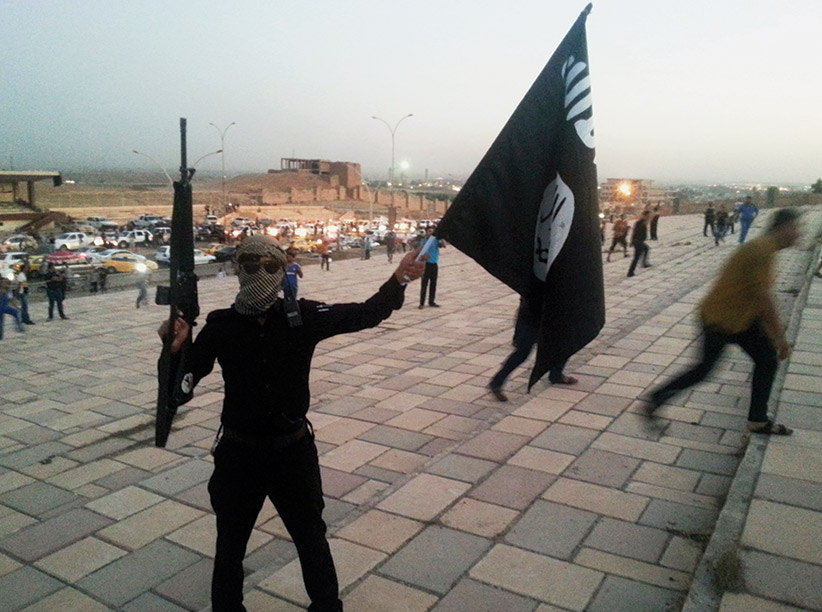
Back in Qayyarah, the townspeople are considering their future. “I stayed to see the army liberate our town,” says 18-year-old Idris Mohamed, but many of his neighbours have fled, seeking better conditions elsewhere. The United Nations expects that up to one million people could be displaced by fighting to retake Mosul. In a July appeal, it asked international donors for an additional $284 million to provide essential services for them. So far it has received $66 million. Nearly 90,000 people have already fled fighting since June, and camps are already filled past capacity.
A convoy of military vehicles pulls off the road. The mayor of Mosul, Hussein Ali Hachem, himself a Qayyarah resident, is greeted by cheers as he steps from a Humvee. He explains that Iraqi authorities are encouraging civilians to remain in their homes, even as fighting continues. “We told them to stay here,” he says. “They will stay here for three, four months even if they have nothing.”
After living precariously for so long, many in Qayyarah say they already have nothing left. “My car was destroyed in the fighting, there’s oil in the water mains and the smoke from the fires is making us sick,” says Mohamed. “We accept and tolerate all of this in order to be free of ISIS, but now we need help.”
Once the common enemy is driven from Mosul, this will be an all too common refrain and the loyalty of Nineveh will be on offer to whomever responds first.